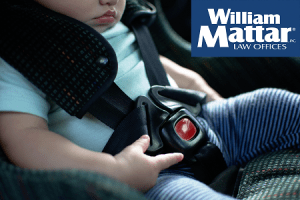
A car accident has the capacity to inflict tremendous force upon another motor vehicle and its occupants—regardless of their ages. If your infant or child was secured in a car seat at the time of the crash and is now experiencing symptoms of pain and limitation, you may want to consider whether he or she sustained an injury in the car accident.
Child Seats & Car Accidents
According to US News & World Report, proper use of child seats save lives, just as seat belts do. The article cites a statistic from the National Highway Traffic Safety Administration that shows proper use of child seats could reduce infant deaths in car accidents by 71 percent and deaths of children between the ages of one and four by 54 percent. According to the same statistics, 31 percent of young kids killed in car crashes had no child seat at all.
Obviously, when it comes to protecting infants and children on our roads, proper use of a child seat is absolutely critical. Sometimes, however, infants and small children can sustain personal injuries despite proper use of a child seat.
Car Accident Aftermath
After a car accident, it is natural for the driver and occupants to take stock.
How did the car accident happen? Who is at fault? Is anyone hurt? If so, what is the nature and extent of their injuries?
The last two questions are easily answered when the occupants are adults or older children. They can be asked about how they feel, and whether they are experiencing pain and limitations.
When the occupants include an infant, baby, and/or toddler, these last two questions can be more difficult to answer because their ability to communicate is limited. For this reason, it can be challenging to identify whether an infant or baby was injured in a car accident.
Determine whether your infant or baby was injured in a car accident
While proper use of a child seat can reduce the risk of serious injury, it will not always prevent injury. When the force of impact travels suddenly and violently through the vehicle, babies and infants are just as susceptible to whiplash injuries to the spine as their adult caregivers. For this reason, depending on the advice of the pediatrician or other qualified medical provider, infants, babies, and/or toddlers should likely be checked for injury after a car accident.
One way to tell whether or not an infant or baby was injured in a motor vehicle accident is to monitor for signs and symptoms of pain and limitation. While infants and babies can be temperamental, if you notice that the infant or baby is crying more than usual, that could be a marker for injury. A qualified medical provider will know what to look for when reviewing whether the infant or baby sustained an injury in the car accident.
Car Accident Time Deadlines
It is important to note that the time to bring a lawsuit after a car accident is limited and will not extend on forever. Statutes of limitation are strict time deadlines within which the lawsuit must be filed. If a lawsuit is not filed within that time deadline, the claim will be lost. Fortunately, in most cases, the statute of limitation is generally “tolled,” or paused, for infants and babies. This means that even if the car accident happened a long time ago, the infant or baby can file a lawsuit at a later time.
Hurt in a Car? Call William Mattar.
The car accident lawyers at William Mattar law offices have experiences representing infants and babies, as well as their caregivers, who have sustained personal injuries in car accidents. Feel free to give us call at (844) 444 - 4444. We are always happy to help.